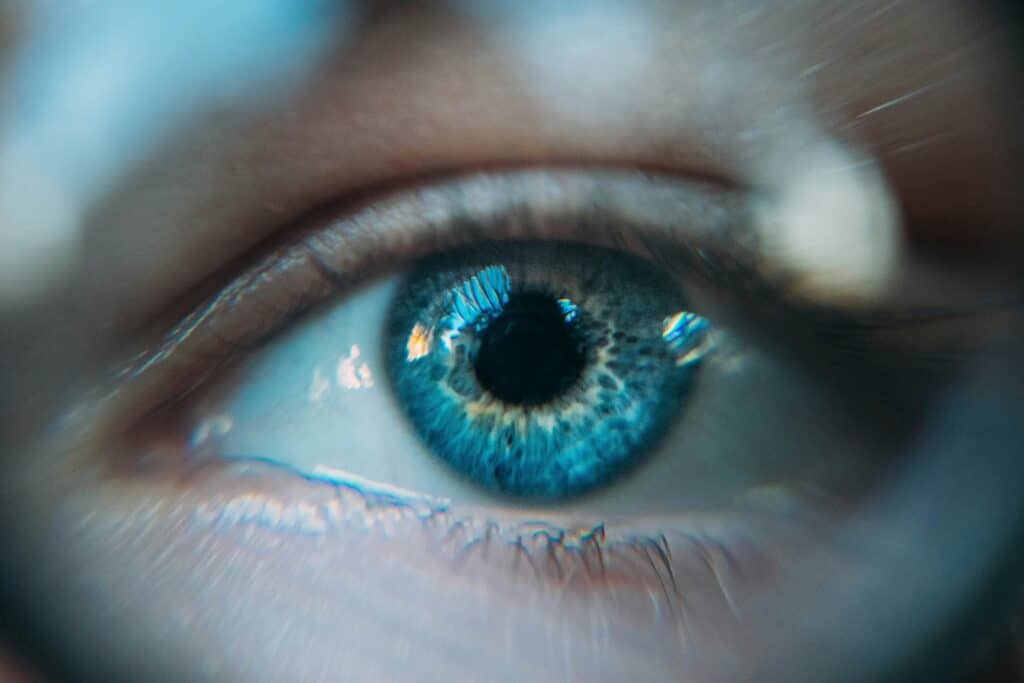What is Diabetic Retinopathy?
Diabetic retinopathy is a complication of diabetes affecting the eyes due to damage to retinal blood vessels. It’s a leading cause of adult blindness, with about one-third of diabetics affected. Early detection through regular eye exams is crucial since symptoms may not appear until later stages. The condition progresses through stages like mild, moderate, severe non-proliferative, and proliferative retinopathy, worsened by prolonged high blood sugar levels. It typically impacts both eyes and is influenced by factors such as blood pressure, cholesterol, pregnancy, and smoking. Treatments range from laser therapy to surgery, aiming to halt progression and preserve vision.
Common Symptoms
Diabetic retinopathy often has no symptoms in the early stages. This is why regular comprehensive eye exams are crucial for people with diabetes, as diabetic retinopathy can progress without noticeable symptoms until it reaches a more advanced stage.
When symptoms do appear, they may include:
- Blurred vision in diabetic retinopathy often occurs when the macula, the central part of the retina responsible for sharp central vision, swells due to leakage of fluid (macular edema). You may notice that your central vision becomes blurry or distorted. This can make it difficult to read or perform tasks that require sharp vision.
- Floaters are specks or spots that appear to float in your field of vision. In diabetic retinopathy, they are typically caused by tiny spots of blood that leak into the vitreous, the gel-like substance that fills the center of the eye. Floaters may appear as dark dots, squiggly lines, or even cobweb-like shapes that move around when you try to focus on them. They are more noticeable against a bright background.
- Impaired color vision can occur due to damage to the retina and the blood vessels that nourish it. Colors may appear faded or less vivid than usual. You might have difficulty distinguishing between shades of color or notice a general dullness in your perception of color.
- Dark or empty areas in your vision (called scotomas) can develop when abnormal blood vessels grow on the surface of the retina and leak blood or fluid into the eye. This can lead to the formation of scar tissue and the development of blind spots. You may experience patches or areas where your vision is completely dark or missing. These areas can impair your ability to see clearly and can progress if left untreated.
It’s important to note that these symptoms may not always occur in isolation and can vary in severity depending on the stage and progression of diabetic retinopathy. Some individuals may experience only mild symptoms or none at all until the disease has advanced significantly. Regular eye exams, especially for individuals with diabetes, are crucial for early detection and timely management of diabetic retinopathy to prevent vision loss.
Treatment Options
Diabetic retinopathy can be treated through several approaches, depending on the stage and severity of the condition:
- Control of Blood Sugar Levels: Managing blood sugar levels effectively through diet, exercise, and medications is crucial to slowing the progression of diabetic retinopathy.
- Regular Eye Exams: Early detection through routine eye exams allows for timely intervention before the condition advances.
- Laser Photocoagulation: This procedure uses a laser to seal leaking blood vessels or to shrink abnormal blood vessels in the retina.
- Intravitreal Injections: Medications, such as anti-VEGF drugs, can be injected directly into the eye to reduce swelling and block the growth of abnormal blood vessels.
- Vitrectomy: In advanced cases where there is significant bleeding into the eye or scar tissue formation, a surgical procedure called vitrectomy may be necessary. It involves removing blood or scar tissue from the vitreous gel in the center of the eye.
- Managing Other Health Conditions: Controlling other health factors like high blood pressure and cholesterol levels can help slow the progression of diabetic retinopathy.
- Regular Monitoring: Continuous monitoring and follow-up appointments with an eye specialist are essential to track the condition and adjust treatment as necessary.
The goal of treatment is to preserve vision, prevent further vision loss, and potentially improve vision where possible. Treatment plans are individualized based on the specific needs and stage of diabetic retinopathy in each patient.
If you have diabetes, it’s important to have regular comprehensive eye exams with an eye specialist (ophthalmologist) who can detect early signs of diabetic retinopathy before you notice any symptoms. Early detection and treatment are key to preventing vision loss.

